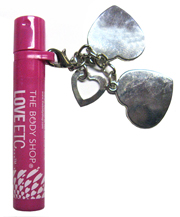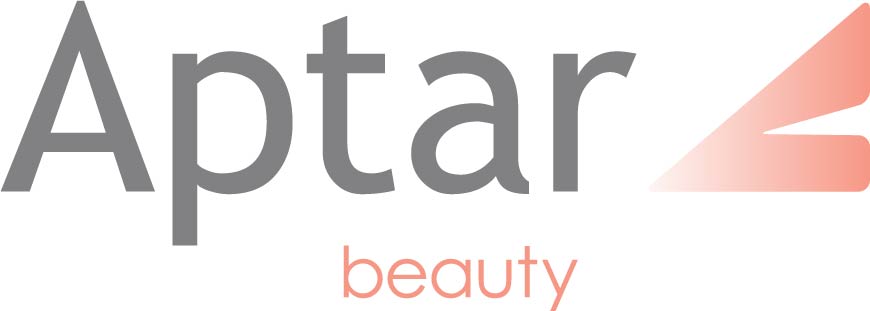Sampling offers a unique opportunity for beauty brands to capture new consumers, but in this era of austerity how can it save itself from the marketing budget chop? Emma Reinhold reports
The saying try before you buy still holds considerable sway in retail, and for the beauty industry it offers a unique way to convert potential consumers into paying customers. From inserts in glossy magazines to promotional activity at stations and sporting events, sampling helps increase brand and product awareness and encourages consumers to make that all important purchase, so much so that it remains an integral element in any marketing mix.
However the sector has felt the pinch of recession thanks to the inevitable slashing of marketing budgets as brands cut back activity at both promotional and product development levels. But following a challenging year in 2009, the industry believes the demand for sampling solutions by beauty brands has returned to its pre-recessionary levels.
“The recession has had a huge impact on sampling and packaging in general,” explains Mark Lockyer, sales director, Sampling Innovations. “Brands have had to put more thought into how their marketing budget is spent and a lot of them have cut back but the impact has not been as big as feared for the overall beauty industry.
“When economic times are difficult budgets are slashed but 80-90% of our clients have continued their normal level of sampling activity and there is a general feeling in the industry that we are coming back to normality but the lesson has been learnt to be more strategic and more conservative.”
“We have found that despite the recession, brands still want to physically reach potential customers and sampling is the best way to increase their visibility, even more so in a crisis,” adds Vinciane Devillers, junior sampler product manager, Rexam. “Last year was a good year for us – customers started to order new stock again and their forecasts for 2011 are looking optimistic.”
To address the changing needs of its customers, Rexam has developed a new value orientated multi-palette system for samplers and mini products which reduces product development time. The Colour Collection, aimed at standard brands with accelerated launch programmes comprises 72 standard colours across three palettes which are suitable for use with the company’s Sofistic 1ml, Mimimist 1ml and Sof’N’Touch 1ml products. The palettes include Essentials, a range of primary, translucent and neutral shades; autumn/winter and spring/summer, featuring seasonal appropriate colours.
“We listened carefully to our customers and created a programme that allows precise selection of the right colour easier,” explains Devillers. “Here is an unmatched choice of standard colours that speeds up the process, encourages creativity and maintains Rexam levels of quality and service.”
Trading up
One way brands are looking to increase their visibility is through the use of more premium sampling solutions.
“There has been a strong trend in premiumising sampling formats,” says Devillers. “Brands have upgraded their sampling and with fragrance in particular we are seeing customers asking for spray formats.”
Rexam’s Sof’Press spray pump is said to recreate the experience of a full size fragrance bottle and features a 12 spray mist which mimimises the amount of juice needed to create a luxurious sampling experience.
“Customer retention is a particularly important marketing cost consideration in times of increased shelf competition and the Sof’Press perfectly emulates the gesture and experience of the retail product and provides opportunity for creative design and decoration,” Devillers explains.
Although the spray format is already in use in France and Europe, Lockyer believes the trend is also filtering through to the UK.
“There is concrete evidence that a consumer is 18 times more likely to try a fragrance if it is in a pump spray format rather than a vial,” he tells SPC.
He admits the pump spray format is more costly than a traditional vial: “But what’s the best investment? A lot of brands could be more effective with their sampling but they don’t look for new challenging ways to do it or it’s purely a budget driven thing. Thousands of brands are competing for the all important Christmas purchase – how can they stand out?”
Lockyer notes The Body Shop’s Love Etc fragrance gift set as an example of how to create effective sampling solutions. The set features a 2ml size pump spray of the fragrance complete with a clip charm. “It would be ideal for a handbag or purse and was a really creative way of sampling. Rather than being an irrelevant gift this had real added value. It’s something related to The Body Shop’s product range and something the customer really wants,” he says.
Ileos subsidiary Socoplan/Biopack meanwhile has introduced a premium roll-on which it hopes will address market demand for samples and mini products in North America and Asia. The 7.5ml moulded glass roll-on has been developed in collaboration with Heinz Glass and is suitable for alcohol-based formulas such as perfumes, as well as eye creams, anti-blemish products and massage products. The roller can be customised with a number of finishes such as metallisation, lacquering, screen printing and hot stamping.
Aptar’s Gift + Promotion division has also looked at ways to create a more luxurious sampling experience. Its Test it Easy concept features a blotter card and mini spray which are clipped together. The blotter is available as a regular card or shaped like a flower, which adds an even greater dimension of value to an otherwise regular sampler.
Looking at sampling in a wider context, Aptar has also introduced a service to customise samples and mini products for use outside traditional sampling margins. The company, which has worked with Cosfibel, says consumers are looking for products that can be used wherever and whenever they want, a weekend away for instance, and the service can create solutions to these consumer demands. Products for travel or promotion are housed in secondary packaging from Cosfibel.
“Within the beauty industry it’s widely recognised that a purchase is often a premium one so getting the sampling right is so important,” says Lockyer. “But it’s not just about new products – sampling boosts the awareness of a brand family or existing products.”
This is particularly true with skin care products. “You can sample an eye cream but the consumer might then look at the moisturiser in the same range,” says Lockyer.
The use of stick packs for sampling skin care products is growing in popularity thanks to their more premium look and feel.
“The quality of the laminates are superior with stick packs and they have a fairly similar cost to standard sachets but they offer a more premium alternative. They are also easier to open and easier to dispense the product inside,” says Lockyer. “Stick packs also use 50-70% less material than traditional sachets.”
A conflict of interest
Sustainability and environmentally responsible packaging are both mainstream issues in today’s packaging marketplace and sampling by its very nature can be at odds with this trend.
“There are hugely conflicting interests,” says Lockyer. “It can be argued that it’s better a consumer makes an accurate purchase after trying a sample than throwing away a full size retail product which will just go to landfill. With sampling you get an accurate purchase.”

The Body Shop adds value
Suppliers are beginning to invest in eco-alternatives however. Rexam’s Sof’N’Touch mini-dispenser for instance is claimed to be 100% recyclable and the use of recyclable plastics over glass is becoming more popular.
“We are seeing a big trend from customers asking for less packaging too,” says Devillers. “There is demand for 1ml rather than 2ml or 5ml samples. You can still have a spray format with this size and you can customise. There is a positive cost element too – you use less product but still get a good test.”
Lockyer warns that it is a subject to be ignored at a manufacturer’s peril. “In the last 18 months the trend has dampened due to the economic situation. But it remains an underlying issue in the industry and I doubt this is the last we have seen of it,” he says.
New opportunities
With the sampling market returning to a more normal level of activity, the obvious question is where can the market go next. Lockyer believes the colour cosmetics market is very poorly represented within sampling.
“There is just not much sampling here and very little innovation in how colour brands sample. It’s expensive to sample in every shade and if consumers see it in store they will try it anyway. Testers in store can also be unhygienic and consumers are unlikely to use a lip product on their own lips to test the colour. But there are some hugely creative solutions for colour. If a brand was bold enough to sample they would get big rewards.”
The power of social media is another medium that needs to be addressed in more detail by sampling brands, according to Lockyer. “Consumers are getting wise to brand claims and celebrity endorsements and recognise that these marketing approaches don’t mean that a product is good. Increasingly consumers are relying on other consumers’ comments. In this environment sampling becomes even more important as it encourages the consumer to try the product themselves.”
With the means to create new and innovative sampling solutions brands have never had a better opportunity to use sampling to their advantage.


